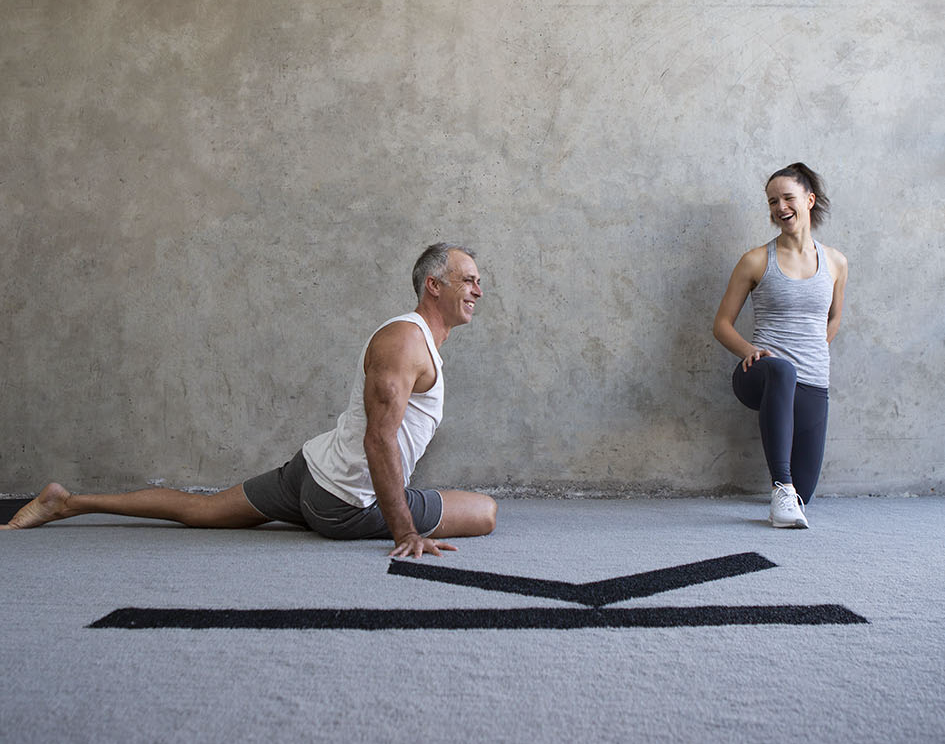How to return to the gym post lockdown
November 25thLoad management
Monitoring and managing your load through the initial weeks of training post-lockdown is vitally important. We must remember that whilst many of us have been training throughout lockdown, our load profile may have changed.
Typically, this will look like an increase in volume and decrease in amount of load resulting in an increase in muscular endurance and a loss of muscular strength and power. It is therefore essential when we return to the gym that we consider these changes and pick a comfortable starting position.
When choosing a starting point, use of a rating of perceived exertion (RPE) is recommended. This rating system allows us to calibrate how your body is responding to the load. Starting at approximately a 7/10 RPE where by the load is comfortable but after your final repetition you still have a couple of repetitions in the bank if needed. Working in this repetition range ensures that the body will be able to adequately adapt over time and not be initially overloaded to the point of injury.
From here it is possible to gradually increase the load over the coming weeks. As a rule of thumb, increasing your load by no more than 20% per exercise per week. So, for example if in week 1 of my return to the gym I deadlift 3 sets of 12 reps 50 Kg, then the following week I could increase my load by up to 10 Kg (20% of 50kg).

Importance of recovery
Recovery is an important component of your body’s ability to adapt to your training. Whilst recovery throughout lockdown may have been more straightforward. Removal of distractions, outings and socialising resulted in sleeping, eating, and resting being prioritised through a process of elimination.
Now with a return of the majority of activities we that enjoy, we need to be aware of how this will influence our bodies. During lockdown you may have been able to do daily HIIT sessions but now out of lockdown your time, energy and recovery periods have been stretched and it makes even attempting these workouts daily seem more difficult. It is therefore logical to consider introducing or prioritising regenerative activities.
Regenerative activities are movements which are low impact and have a restorative effect on the body, such as pilates, yoga, swimming, walking, mobility and mediation. Introducing or prioritising these activities can assist the body with recovering from some of the higher intensity demands that returning to the gym may place on the body.
KISS principle
Keep it simple stupid. When returning to activity, doing the basics and foundational movements well becomes even more important. There is no need to include the favourite exercise of every Instagram influencer that you have come across for the past 3 months into your workout.
Listen to your body, train hard when you’re feeling good but back off the intensity if you’re not feeling it.
What should your program cover?
- Warm up – something that raises the body temperature
- Vertical push – landmine overhead press, overhead shoulder press
- Vertical pull – lat pull down, chin ups
- Horizontal push – seated chest press, DB chest press, BB bench press
- Horizontal pull – seated cable row, bent over DB row, BB bent over row
- Lower body hinge – glut bridge, hip thrust, deadlift, SL hip thrust, SL RDL
- Lower body push – squat (goblet, back, front), step up, lunge, Bulgarian split squat, SL squat
- 2 x core – neither with hip flexion – plank, dead bug, ab roller, pallof press
If you have any questions regarding the above information or would like some assistance with your return to the gym, please don’t hesitate to book in with one of our strength + conditioning coaches at K2!
By Jackson Clark
Osteopath | Strength + Conditioning
Kinematics Strength + Recovery (K2)
